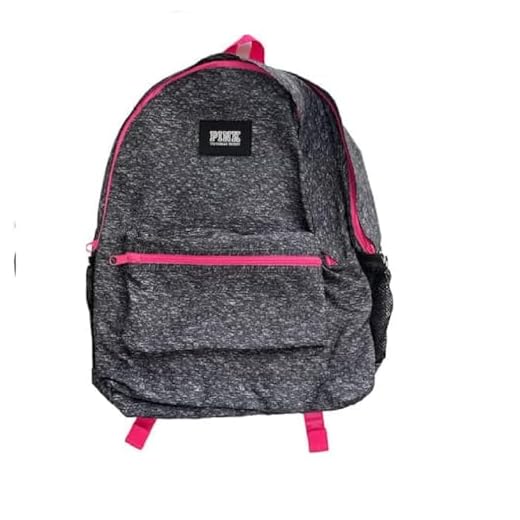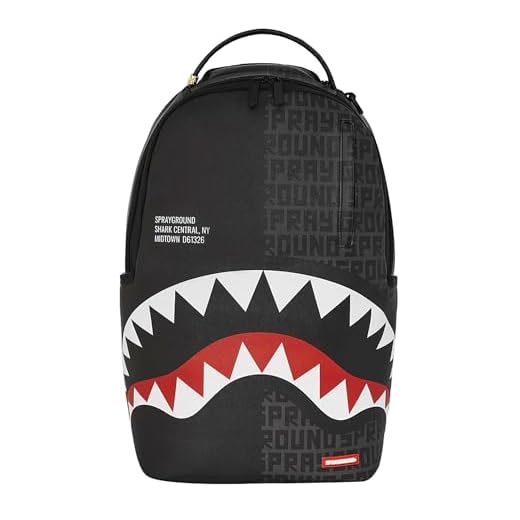



Primary recommendation: start at the label’s official webstore and any branded flagship locations listed on that site; buyers should verify dealer lists published in the site footer or support pages, confirm SSL and correct SKU numbers, and use the brand’s customer service channel to validate unusual listings or serial codes.
For mainstream retail options, check established multibrand outlets and department stores that list item model numbers in product pages; when using major marketplaces such as Amazon or eBay, prefer listings marked “fulfilled by” or sold by high-rated, verified sellers and review return windows and seller history before completing a purchase.
For sold-out or limited-edition releases, use authenticated resale platforms (examples: StockX, Grailed) that provide verification and grade proofs; peer-to-peer apps (Depop, social-marketplace groups) are acceptable only after requesting close-up photos of interior tags, zipper-brand stamps, and original receipts – expect resale premiums and factor authentication fees into the final price.
Quick checklist for confident acquisition: confirm SKU and packaging against official product images; request serial-code verification from seller when available; prefer card or PayPal payments for buyer protection; inspect zippers, stitching and hardware details in photos; avoid listings priced well below typical retail without provenance, and retain order records for any returns or authenticity disputes.
Official retailers and trusted resellers
Purchase directly from the label’s official webstore for the fullest selection, release-drop notifications, verified authenticity, full manufacturer warranty and access to limited-edition collaborations.
Authorized online shops and brick‑and‑mortar outlets
National and international streetwear retailers that frequently stock the brand include SSENSE, KITH, Zumiez, PacSun, Urban Outfitters and selected department stores and skate boutiques. Marketplace platforms with verified-seller programs–StockX and Grailed–offer authenticated new and pre-owned pieces; eBay listings require extra scrutiny unless seller has a strong feedback history and clear return terms.
Practical verification and ordering tips
Confirm seller authorization via the label’s official retailer list. Request close-up photos showing interior tags, model code and any hologram or serial details; match those against official product pages. Prefer listings with explicit return policies and tracked shipping. Use a card or payment service with buyer protection. Reject offers priced dramatically below typical retail; unusually low fees often indicate counterfeit or incomplete items. Allow 5–14 business days for international shipping and anticipate possible import taxes; keep receipts and order confirmations for warranty or claims.
Purchase via the official online store: checkout steps, payment options, and authenticity checks
Use the brand’s official online store and confirm HTTPS padlock plus exact domain match before submitting payment details.
Checkout steps
- Create an account for order history, easier returns, and shipment tracking; enable two-factor authentication on the profile.
- Select item, verify model/SKU code displayed on the product page matches the shopping cart entry, and confirm size, color, and quantity.
- Apply promo or gift codes on the order summary page; check coupon expiry and single-use restrictions prior to applying.
- Enter shipping and billing addresses; ensure billing address matches card issuer records to reduce payment declines.
- Choose shipping method: standard vs expedited, add signature requirement or insured delivery for high-value purchases.
- Review the final invoice: itemized price, shipping, taxes, duties, estimated delivery window, and refund/return policy link.
- Complete payment and save the confirmation email. Confirm that the confirmation contains an order number, item SKUs, and a tracking link from a major carrier.
Payment options and security
- Common accepted methods: major credit/debit cards (Visa, MasterCard, American Express), PayPal, Apple Pay, Google Pay, and select buy-now-pay-later providers (Klarna, Afterpay) where available.
- Look for 3-D Secure prompts (Verified by Visa / MasterCard SecureCode) during card checkout; enter CVV when requested and avoid saving cards on public devices.
- Digital wallet payments reduce exposure of card numbers; prefer Apple/Google Pay when supported.
- Refund timing: card refunds typically post within 5–10 business days after processing; PayPal refunds often appear faster but vary by provider.
- Confirm PCI-DSS compliance badge on the payment page and validate the site’s privacy policy for data handling specifics.
Authentication checks for product legitimacy
- Match SKU/style number from the packing slip to the product page and official catalog images; discrepancies warrant seller verification before acceptance.
- Inspect packaging: brand-branded box, holographic tags, sewn-in labels, barcode/UPC that scans to the official product, and any included authenticity card.
- Examine construction quality: uniform stitching, engraved or stamped hardware logos, consistent zipper brands and pulls, and interior lining print matching official photos.
- Check for a serial or production code (if present) and contact customer service with that code plus order number for verification.
- Flagging criteria: large markdowns (>40–50% below MSRP), blurry product photos, seller refusal to provide close-up images of tags or hardware, or absence of original packaging.
- If purchasing via a third-party marketplace, confirm the seller is listed as an “authorized retailer” on the brand’s support pages before finalizing the transaction.
- On delivery, photograph the item and all labels before opening; retain original packaging and initiate a return within the stated return window if authenticity doubt arises.
Find local authorized retailers: search by city, in-store pickup, and stock inquiry tips
Use the brand’s official store-locator: enter city or ZIP, set a 10–25 mile radius, apply the “Authorized Retailer” filter and copy store IDs plus product SKUs for verification before contacting the outlet.
City-search tactics
Query multiple nearby municipalities and adjacent ZIP prefixes to expand results; enter both city name and ZIP to catch differences in store listings. For metro areas, run separate searches for each borough or suburb (example: central city, north suburb, port district). Cross-check results with Google Maps by searching “authorized retailer” plus the product line descriptor (e.g., “graphic packs” or model name) to surface independent boutiques and specialty chains that the official locator might omit.
Save contact numbers, store hours, and a screenshot of the locator entry (shows authorization badge and store ID). If a store lacks an authorization badge on its profile, request its reseller certificate number and verify that number on the manufacturer’s site before proceeding.
In-store pickup and stock inquiry procedure
When contacting a store, provide the precise SKU or UPC code and ask for: current on-hand quantity, any pending holds, arrival date of next shipment, and whether a hold can be placed against a partial payment or card authorization. Request the item’s exact location in-store (receiving, backstock, display) and a timestamped photo of the item and packaging if available.
Confirm pickup logistics: hold duration (typical windows: 24, 48, or 72 hours), payment methods accepted at pickup (card present, online prepay, pay-at-counter), ID required, and return window for in-store purchases. Ask for a reservation confirmation number and the name of the staff member making the hold. For authentication, request a close-up photo of internal tags, hologram/serial labels, and original box barcode prior to arrival.
If inventory status differs between the store and the official locator, note both store ID and timestamp of the locator result, then escalate to the manufacturer’s retail support with those details for resolution. For high-demand models, consider calling first thing in the morning (first hour of opening) when restocks are processed and backstock is accessible.
Choose resale marketplaces safely: spotting fakes, seller ratings, and fair price ranges
Purchase only from sellers with ≥98% positive feedback and at least 200 completed transactions; before committing ask for timestamped close-ups of the interior label, SKU code, and hardware serial number.
Authentication checklist: compare the listing photos against official product images for exact logo placement and font; verify the SKU/Style code matches the brand’s catalog (search Google with the code + model name); inspect lining pattern and zipper branding (authentic items usually use branded metal zippers and smooth pulls); check for an internal hologram/serial sticker and a care tag showing country of manufacture consistent with genuine units; request a short video of the zipper action and inside pocket to confirm construction quality.
Seller credibility metrics: prefer marketplace-verified sellers, accounts older than 12 months, and profiles linked to social media or a storefront website. Require payment via card or PayPal Goods & Services for chargeback protection; avoid requests for Friends & Family transfers, direct bank wires, or crypto. Use marketplaces offering returns or third-party authentication (eBay Authenticity Guarantee, StockX, GOAT for footwear/apparel categories where available).
Fair price ranges (use MSRP as anchor): new, authorized listings usually trade within ±10–20% of MSRP; lightly used units in excellent condition commonly sell at 40–70% of MSRP depending on rarity; a listing priced >30% above MSRP needs provenance (receipt, limited-edition certificate); a listing >50% below typical used range is a high-risk signal for counterfeit or missing parts. Factor in shipping, import VAT, and seller fees when calculating final cost.
Red flags that indicate a probable fake: inconsistent logo stitching, blurry or stock photos, missing care tags, seller refuses to provide serial/SKU, unrealisticly low price, no returns policy, brand-new listing with zero history, unusually high international shipping fees combined with request to use private courier. If doubts remain, delay transaction until a reputable authentication service inspects the item.
Post-purchase care tip: for cleaning and fabric maintenance of outdoor-use items consult best way to wash outdoor umbrella for methods applicable to synthetic coatings and water-resistant fabrics.
Secure limited drops and collaborations: tracking release calendars, preorders, and reservation tactics
Set calendar alerts on the brand’s official release page, Instagram product posts, and the Discord drops channel; convert announced launch time to UTC and local time, then create reminders at T-15 minutes, T-2 minutes, and T-30 seconds.
Monitor product pages with page-change watchers such as Distill.io, Visualping, Hexowatch or a Shopify-specific notifier; configure a 5–15 second polling interval for the first ten minutes of a drop, escalate alerts to mobile push or Telegram, then reduce polling to 60 seconds after initial activity to avoid API throttling.
Identify preorder type before placing an order: full-charge at checkout, authorization with capture upon shipment, or deposit-only reservation. Record deposit percentage, expected ship week, refund window, and any restock guarantees; capture screenshots of the preorder terms and the merchant’s checkout flow for dispute evidence.
Prepare accounts ahead: register and verify multiple customer profiles with distinct emails and phone numbers, preload shipping addresses with consistent formatting for AVS checks, and save payment methods that support one-click checkout (Apple Pay, Google Pay, PayPal One Touch). Run a low-value test purchase 48 hours before a launch to confirm tokenized payment and 3DS pass-through.
Use a multi-device, multi-network approach to increase throughput while avoiding session locks: desktop browser with autofill + mobile app + tablet; keep a cellular hotspot available to switch IPs quickly if site rate-limits the primary connection. Avoid shared public proxies that trigger fraud controls; residential VPN exits only when necessary and with new sessions per account.
Workaround high-concurrency failures by splitting orders across authorized retailers if quantity limits apply; when reservation holds are offered by brick-and-mortar partners, call store staff immediately at the listed time and request a phone hold under the order number provided by the POS system.
For checkout speed, enable browser autofill for name and address, pre-save cards in the wallet, and memorize or keep CVV visible for rapid entry; if checkout requires manual CVV entry, prioritize wallets that bypass form-filling delay. If site uses CAPTCHA, have an alternate device ready to solve while primary device completes payment steps.
Avoid automated scraping or unauthorized bots unless compliant with merchant terms; instead pair fast manual checkout with real-time page monitors and Discord/SMS alerts. Maintain a log of successful tactics per merchant (time to open cart, typical server lag, payment methods accepted) to refine tactics across drops.
Practice the entire workflow on a non-related high-demand item to verify timing and notifications; a suitable test target: best all in one saltwater aquarium kit.
After order placement, immediately screenshot the confirmation page, save the order number and line-item SKU, monitor shipment updates, and escalate to merchant support with evidence if payment appears authorized but order status remains pending beyond the advertised window.








